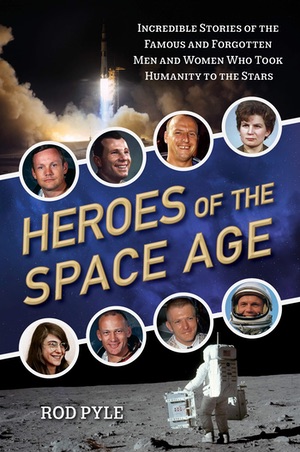Review: Heroes of the Space Ageby Jeff Foust
|
| A bigger issue is who is included, or excluded, from the book. Notably absent are rocketry pioneers like Sergei Korolev and Wernher von Braun, without whom the Space Age would not have started how it did and when it did, nor have progressed so quickly in those early years. |
Those four, plus Aldrin, Pete Conrad, Yuri Gagarin, and John Glenn, are profiled in the book’s pages. Those profiles are pretty straightforward, based largely on existing accounts: the chapter on Kranz, for example, makes extensive use of his autobiography and an oral history interview with NASA. While there may be some interesting anecdotes here and there, the book primarily reinforces what’s already known for each person rather than uncovering new information or providing new perspectives about their lives.
A bigger issue is who is included, or excluded, from the book. With a subtitle reference to “famous and forgotten” people, one can make a case for all eight people. Some, like Gagarin and Armstrong, are obvious; Hamilton is the closest to being “forgotten” although her contributions to Apollo have become better known recently, particularly during the 50th anniversary celebrations this year.
Notably absent, though, are rocketry pioneers like Sergei Korolev and Wernher von Braun, without whom the Space Age would not have started how it did and when it did, nor have progressed so quickly in those early years. Without James Webb at the helm of NASA for much of the 1960s, Apollo would have been far less likely to meet President Kennedy’s goal of landing men on the moon by the end of the decade.
Pyle anticipates such criticism in the book’s introduction, stating that deciding who to include “has been a curse” and blames “editorial triage” for any omissions. “I selected some of the most amazing people I knew of, and I have tried to bring them to life in this book,” he writes.
As long as the reader keeps in mind the qualifier “some of,” this is very much the case: the profiles of these eight people do treat them as human beings and not just historical figures, even if their lives are already familiar to many readers. That’s all the more important as that generation slowly fades into history.
Note: we are temporarily moderating all comments subcommitted to deal with a surge in spam.
